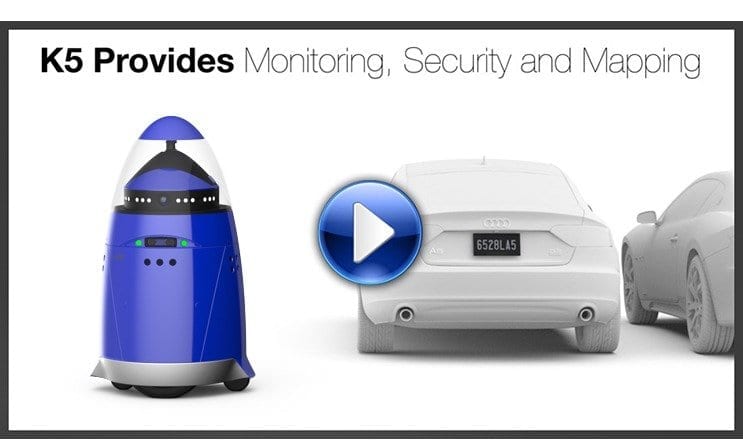
via KAIST
New research enables the efficient planning of the activities of systems of mobile robots for socially beneficial services including border patrol, search & rescue, and security escort.
Modern mobile robots have increasingly practical capabilities. Amazon.com is developing unmanned aerial vehicles (UAVs) or drones for package delivery. Autonomous cars can safely navigate our streets without a driver. Yet, while the capabilities of such mobile robots are impressive, how useful is a single mobile robot? What is required for mobile robots to contribute to applications that directly benefit society – social applications – are systems of robots working cooperatively to address large-scale opportunities.
To support large-scale social applications such as border patrol, search & rescue, and city-wide security services, hundreds or thousands of mobile robots must work in tandem to jointly pursue the system objectives. In addition to the robots themselves, a truly autonomous system must be supported by automatic fuel/energy replenishment depots. If the mobile robots are to deliver relief supplies, these depots must also replace the depleted supplies.
While rudimentary methods can be used to plan the activities of all of these resources, in the context of social applications, efficiency is essential. Well-coordinated border patrol systems will improve national security. Efficient search & rescue will cover more area quickly so that more survivors can be located. See the main image for a concept of UAV search & rescue at sea. Highly productive security escort systems will improve the security coverage provided to the customers. In this context, intelligent allocation of system resources drives improved security and even saves lives.
At Korea Advanced Institute of Science and Technology (KAIST)’s xS3D lab, Professor James R. Morrison and his students are developing methods to efficiently orchestrate the activities of systems of mobile robots together with fuel and supply depots. They have employed the mixed integer linear programming (MILP) model to characterize the physics of such systems. As the social applications they are targeting are best served by large scale systems with many robots and depots, they have developed fast algorithms to solve the MILP models and determine efficient task plans for the system resources.
Future systems of mobile robots will use such task orchestration methods to enable efficient operation. As a consequence, UAVs can work in concert to keep our borders more secure. In the event of a disaster, colleagues, friends, and loved ones may be found and rescued more quickly. Our cities and campuses can be made safer by a more efficient and organized system of UAVs.
Learn more: Orchestration of systems of mobile robots for border protection, search & rescue, and personal security
The Latest on: Systems of robots
[google_news title=”” keyword=”systems of robots” num_posts=”10″ blurb_length=”0″ show_thumb=”left”]
via Google News
The Latest on: Systems of robots
- Intelligent plant cultivating system boosts vegetable output at Fujian's automated plant factoryon May 10, 2024 at 7:05 am
southeast China's Fujian Province. Intelligent robots work at a plant factory of Sananbio in Anxi County of Quanzhou, southeast China's Fujian Province, May 8, 2024.
- British Army to get ‘world’s most capable’ bomb disposal robotson May 10, 2024 at 5:32 am
The British Army is set to feature advanced bomb disposal robots that will help neutralize threats, including explosives and hazardous materials. The batch will consist of 50 high-tech, ...
- The Future of City Parking – Robot Car Valets to The Rescueon May 10, 2024 at 5:25 am
Discover how space-saving AI-powered Automated Parking Systems (APS) are helping to reduce urban congestion, pollution, and crime.
- How we test robot vacuums and mops at TechHiveon May 9, 2024 at 11:12 pm
The robot vacuum market is booming, with more innovative and diverse models hitting the shelves every week. These household helpers are becoming increasingly sophisticated, with features ranging from ...
- Team compares robot-assisted language learning systems and human tutors in English conversation lessonson May 9, 2024 at 9:00 pm
Advancements in large language models, robotics, and software such as text-to-speech, have made it possible to develop robots that can understand language, interact physically, and communicate ...
- Robotic system feeds people with severe mobility limitationson May 9, 2024 at 7:14 am
Cornell researchers have developed a robotic feeding system that uses computer vision, machine learning and multimodal sensing to safely feed people with severe mobility limitations, including those ...
- Swarms of miniature robots clean up microplastics and microbes, simultaneouslyon May 8, 2024 at 8:14 am
When old food packaging, discarded children's toys and other mismanaged plastic waste break down into microplastics, they become even harder to clean up from oceans and waterways. These tiny bits of ...
- Swarm of tiny snail robots stick together to form new structureson May 8, 2024 at 6:15 am
Researchers have built a swarm of miniature, snail-inspired robots, minus all the mucus. Instead, a retractable suction cup works in tandem with the remote-controlled machine’s tank-like treads to ...
- Swarms of miniature robots clean up microplastics and microbes, simultaneously (video)on May 7, 2024 at 5:00 pm
When old food packaging, discarded children’s toys and other mismanaged plastic waste break down into microplastics, they become even harder to clean up from oceans and waterways. These tiny bits of ...
- Tesla releases new Optimus humanoid robot video that creates controversyon May 6, 2024 at 1:42 pm
Tesla has released a new video of a prototype of Optimus, its humanoid robot, and it created some controversy as some disagree about how impressive it is.
via Bing News










